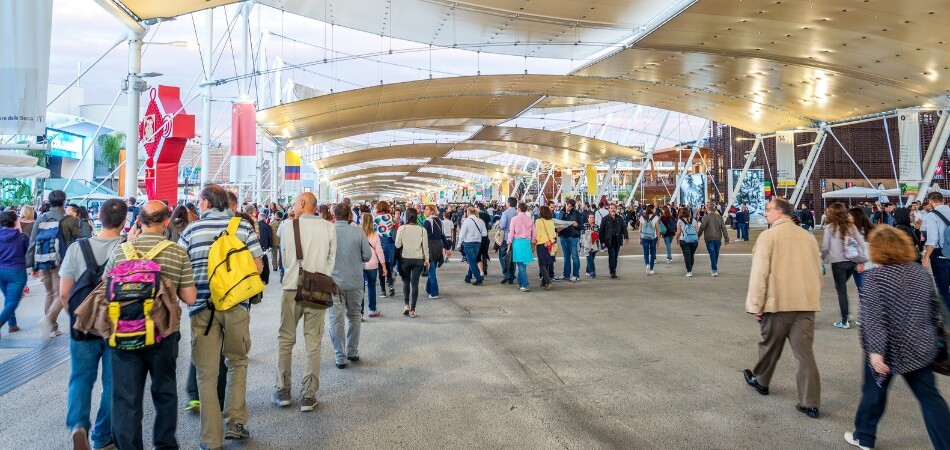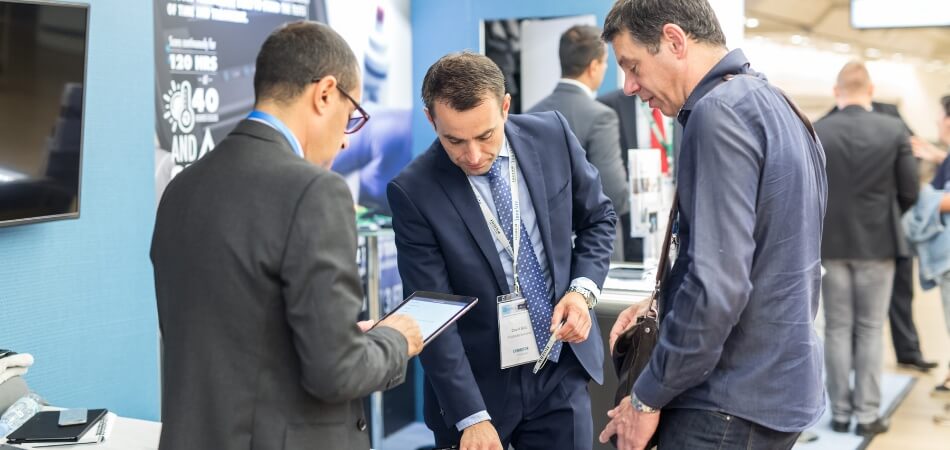The art world often presents a glamorous face, but behind the scenes, the functionality of showcasing art can be quite complex. A burning question many emerging artists and art enthusiasts ask is, “Do artists pay to be in an Exhibition?”
No, not all artists pay to be in an exhibition. While participation in some commercial galleries or art fairs might come with a cost, covering expenses like space rental and promotion, this is not a universal practice. Many exhibitions, particularly those held in public galleries and museums, welcome artists without requiring any payment.
This blog dives into the complex issues of this topic, exploring the various scenarios where artists may or may not pay to showcase their work. Stay with us as we figure out the complexities behind the scenes of the art world.
What Happens at the Exhibition?
At the exhibition, an array of lively colors and innovative designs attract visitors from the moment they step in. Each booth showcases unique art pieces, blending traditional and modern styles in a seamless harmony. Enthusiastic artists engage with the audience, sharing stories behind their creations and their artistic journey.

In another section, interactive installations offer a hands-on experience, where visitors become part of the art. Technology merges with creativity, as virtual reality setups transport users to imaginative worlds. Amidst the buzz, children participate in workshops, their laughter fusion with the background music, creating a lively atmosphere.
As the day progresses, a panel of esteemed artists conducts a discussion, offering insights into the evolving art world. Visitors, ranging from seasoned collectors to art students, listen intently, absorbing the wealth of knowledge. The exhibition, a melting pot of ideas and cultures, leaves a lasting impression on all who attend, inspiring creativity and appreciation for the arts.
The Role of Artists in Exhibitions
Art exhibitions are a kaleidoscope of creativity, where artists play pivotal roles. Their contributions shape the essence and success of these events. Here, we explore the multifaceted roles artists promise in exhibitions.
- Artists are the creators, bringing life to the exhibition with their unique artworks. Their creations are the focal points, around which the entire event revolves.
- They engage with the audience, providing insights into their creative process and artistic vision. This interaction enriches the viewers’ experience, making the art more relatable and impactful.
- Artists often collaborate with curators, ensuring their work is displayed in a way that best represents their intent. This collaboration is crucial for creating a cohesive and meaningful exhibition.
- Networking is another key role, as artists connect with potential buyers, fellow artists, and critics. These connections can lead to future opportunities and collaborations.
- They also play a part in promoting the exhibition, often using their personal networks and social media platforms. This promotion helps in attracting a wider audience and gaining more exposure.
- In many cases, artists are involved in the logistical aspects, from transportation of artworks to setup. Their involvement ensures the art is handled with care and displayed optimally.
Artists are the heart and soul of art exhibitions, bringing their visions to the public eye. Their diverse roles, from creation to networking, highlight their importance in the art world.
Types of Artiest You Can See in Exhibition
Exhibitions are a melting pot of artistic talent, showcasing a variety of artists each with their own unique styles and backgrounds. These events provide a platform for diverse artistic expressions, from traditional to contemporary. Let’s explore the types of artists you might encounter in an art exhibition.
Emerging Artists
These are the new voices in the art world, often fresh from art schools or self-taught. Their work is vibrant, offering new perspectives and innovative techniques. Emerging artists bring a sense of excitement and novelty, often experimenting with unconventional materials. Their presence adds a fresh dynamic to the exhibition landscape.
Established Artists
These artists have a significant presence in the art world, recognized for their mastery and consistent contributions. Their work is often highly anticipated and serves as a benchmark for quality. Established artists provide a sense of continuity and tradition. They often mentor younger artists, passing on valuable knowledge and skills.
Contemporary Artists
Contemporary artists are known for pushing boundaries and challenging traditional art forms. Their work reflects current themes and often incorporates new media and technology. They are known for conceptual and often provocative pieces. Their presence in exhibitions sparks debates and discussions, making art a dynamic dialogue.
Traditional Artists
These artists keep the heritage and classical techniques of art alive. Their work often reflects historical themes and employs time-honored methods. Traditional artists offer a connection to the past, grounding exhibitions in a historical context. Their art provides a contrast to more modern works, enriching the diversity of the show.
Multimedia Artists
Multimedia artists blend various forms like digital art, video, and sound installations. Their work is often interactive, engaging the audience in unique ways. They represent the cutting-edge of art, where technology meets creativity. Their presence in exhibitions demonstrates the evolving nature of artistic expression.
Performance Artists
Performance artists use their bodies as the primary medium, delivering art in real-time. Their work is ephemeral, existing only in the moment and in the memories of the audience. They often explore themes of identity, society, and culture. Performance art adds a dynamic and often unexpected element to exhibitions.
Exhibitions are a rich tapestry of artistic talent, showcasing a wide array of styles and approaches. From the traditional to the avant-garde, these artists bring their unique visions to life, offering viewers a multifaceted experience.
Do Artists Pay to Be in an Exhibition?
No, not all artists are required to pay to exhibit their work, though this varies based on the venue and exhibition type. While commercial galleries might charge, public galleries and museums often do not, reflecting different operational models and objectives.

Type of Gallery
Commercial galleries often require artists to pay for space and promotional efforts. This cost covers the gallery’s expenses in showcasing the art, such as marketing and event organization. Public galleries and museums, on the other hand, typically do not charge artists, as they are funded differently.
Nature of the Exhibition
Art fairs and trade shows usually involve booth rental fees for participating artists. These fees contribute to the overall running of the event and can be significant. Conversely, non-commercial exhibitions, often aimed at promoting art rather than sales, generally do not require payment from artists.
Artist’s Recognition
Established artists with a strong following might not pay to exhibit, as galleries benefit from their reputation. In contrast, emerging artists are more likely to encounter exhibition fees, especially in competitive, high-visibility venues. Some prestigious exhibitions may waive fees for highly acclaimed artists as a draw for visitors.
Funding and Sponsorships
Exhibitions funded by grants, sponsorships, or donations might not require artists to pay. These funds cover the operational costs, allowing free participation for artists. However, in less-funded events, especially in smaller or independent venues, artists might need to contribute financially.
Collaborative vs. Solo Exhibitions
In collaborative exhibitions, costs can be shared among multiple artists, reducing individual financial burdens. Solo exhibitions, however, often come with higher costs, which might be borne by the artist if the gallery doesn’t cover them. Collaborative shows can also offer networking and exposure, balancing out any costs involved.
In essence, whether artists pay to exhibit their work depends on the type of gallery, the nature of the exhibition, their recognition, available funding, and the exhibition format. This variability reflects the diverse nature of the art world and its exhibition practices.
Common Myths and Misconceptions About Artists Paying to Exhibit
The art world is common with myths and misconceptions, particularly regarding artists paying to exhibit their work. These misunderstandings can twist perceptions of the industry. Let’s expose some common myths to better understand the realities of art exhibitions.
- All Artists Must Pay to Exhibit: It’s a misconception that all artists must pay to exhibit their works. Many public galleries and museums do not charge artists, focusing instead on cultural value.
- Paying Guarantees Success: Paying for exhibition space doesn’t guarantee an artist’s success or sales. Success depends on various factors, including the artist’s reputation, the quality of the work, and market trends.
- Only Amateur Artists Pay: The belief that only amateur artists pay for exhibition space is false. Both emerging and established artists may choose to pay for exhibiting in certain commercial spaces.
- Free Exhibitions Are Low-Quality: Free exhibition spaces do not equal to lower-quality art. Many prestigious institutions offer free exhibition opportunities that showcase high-caliber work.
- Paying for Space Is Unethical: Paying for exhibition space isn’t inherently unethical. It’s a business model that supports galleries and provides artists with exposure.
- High Fees Mean Better Exposure: High exhibition fees don’t necessarily mean better exposure or prestige. Exposure depends on the gallery’s reputation, location, and marketing efforts, not just the cost.
In essence, the art world’s dynamics around exhibitions and payments are complex and varied. Dispelling these myths is crucial for understanding the diverse paths artists take to showcase their work.
Essential Tips for Artists to Maximize Their Exhibition Experience
For artists, an exhibition is not just a display of their work; it’s a chance to connect with audiences, promote their careers, and leave a lasting impact on the art world. Whether you’re a seasoned artist or just starting, here are some essential tips:

Prepare Your Portfolio
Ensure your portfolio is well-curated, showcasing your best and most relevant work. Presentation matters, both physically and online. Label each piece with titles and descriptions to provide insight into your artistic process. Consider including a brief artist statement that reflects your style and inspiration.
Research the Venue
Understand the venue where you’ll exhibit. Tailor your art to fit the space, and consider the audience who typically visits. Familiarize yourself with the gallery’s guidelines and submission requirements. Take a visit to the venue in advance to get a feel for the layout and lighting.
Promote Yourself
Utilize social media and personal networks for self-promotion. Engage with potential viewers and collectors, sharing your journey. Create a compelling artist statement that conveys the essence of your work. Utilize online platforms like artist websites and online galleries to reach a global audience.
Professional Documentation
Invest in professional photography of your work. High-quality images are essential for online promotion and submissions. Document your artistic process, sharing behind-the-scenes glimpses with your audience. Consider creating an online portfolio or blog to showcase your art’s evolution.
Network Effectively
Attend art-related events and exhibitions to expand your network. Building connections can lead to future opportunities and collaborations. Collaborate with fellow artists on joint exhibitions or projects to amplify your reach. Don’t hesitate to reach out to art influencers or bloggers for potential features.
Financial Planning
Consider the financial aspects carefully. Calculate potential costs and returns to ensure a sustainable exhibition experience. Set a budget for promotional materials, framing, and transportation, and explore grant opportunities to relieve financial burdens. Keep track of expenses and income to assess the profitability of your exhibitions.
A successful exhibition experience is a blend of artistry, strategy, and preparation, enriched by attention to detail in each of these key areas. By following these tips and incorporating these additional insights, artists can maximize their impact and create a memorable artistic journey.
Bottom Line
In Summing up the article, we find that the question “Do artists pay to be in an Exhibition?” reveals a complex art world where the answer isn’t straightforward. Payment depends on various factors like gallery type and the artist’s recognition.
In the art world, myths such as paying for success are common, but the reality is more nuanced. Artists’ roles in exhibitions vary, from creating to networking, influencing the event’s success.
For artists, exhibitions are more than just showing their work; they’re opportunities for growth and connection. Strategic preparation and effective networking are key to maximizing their exhibition experience.


